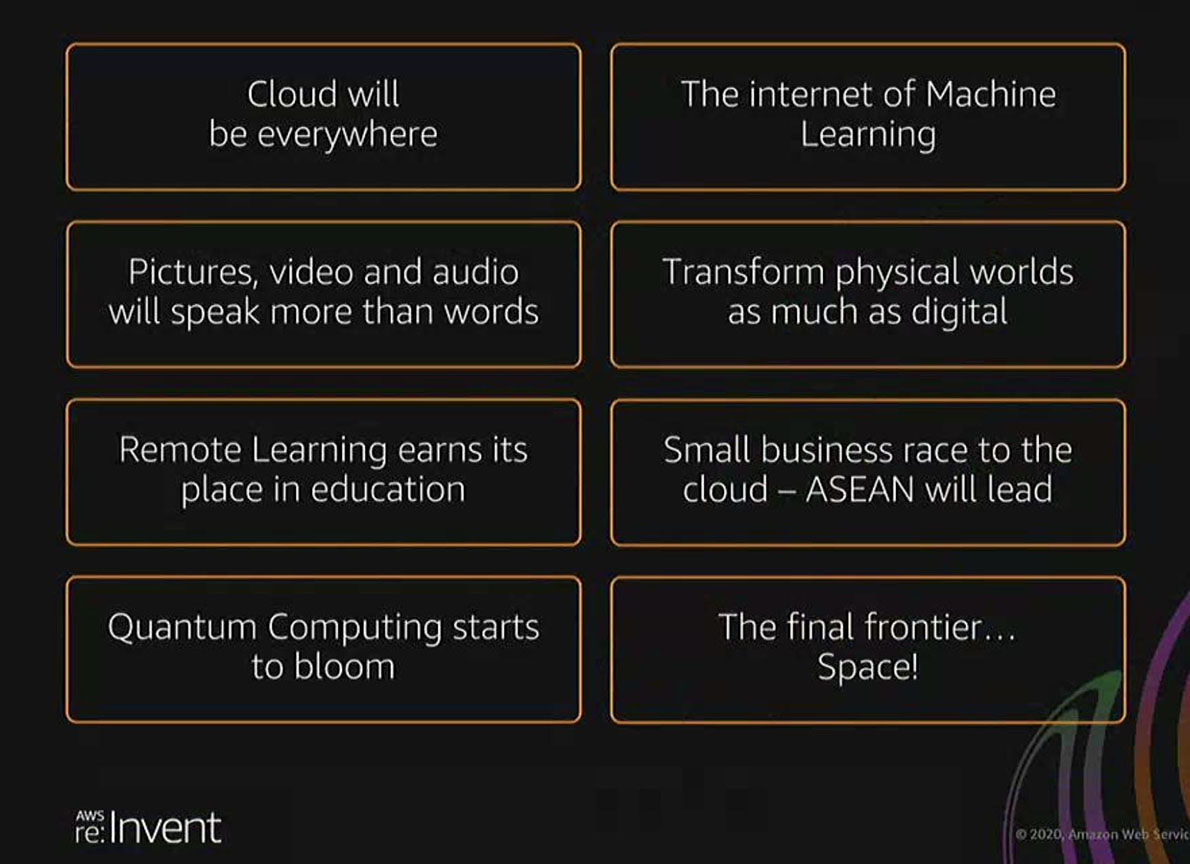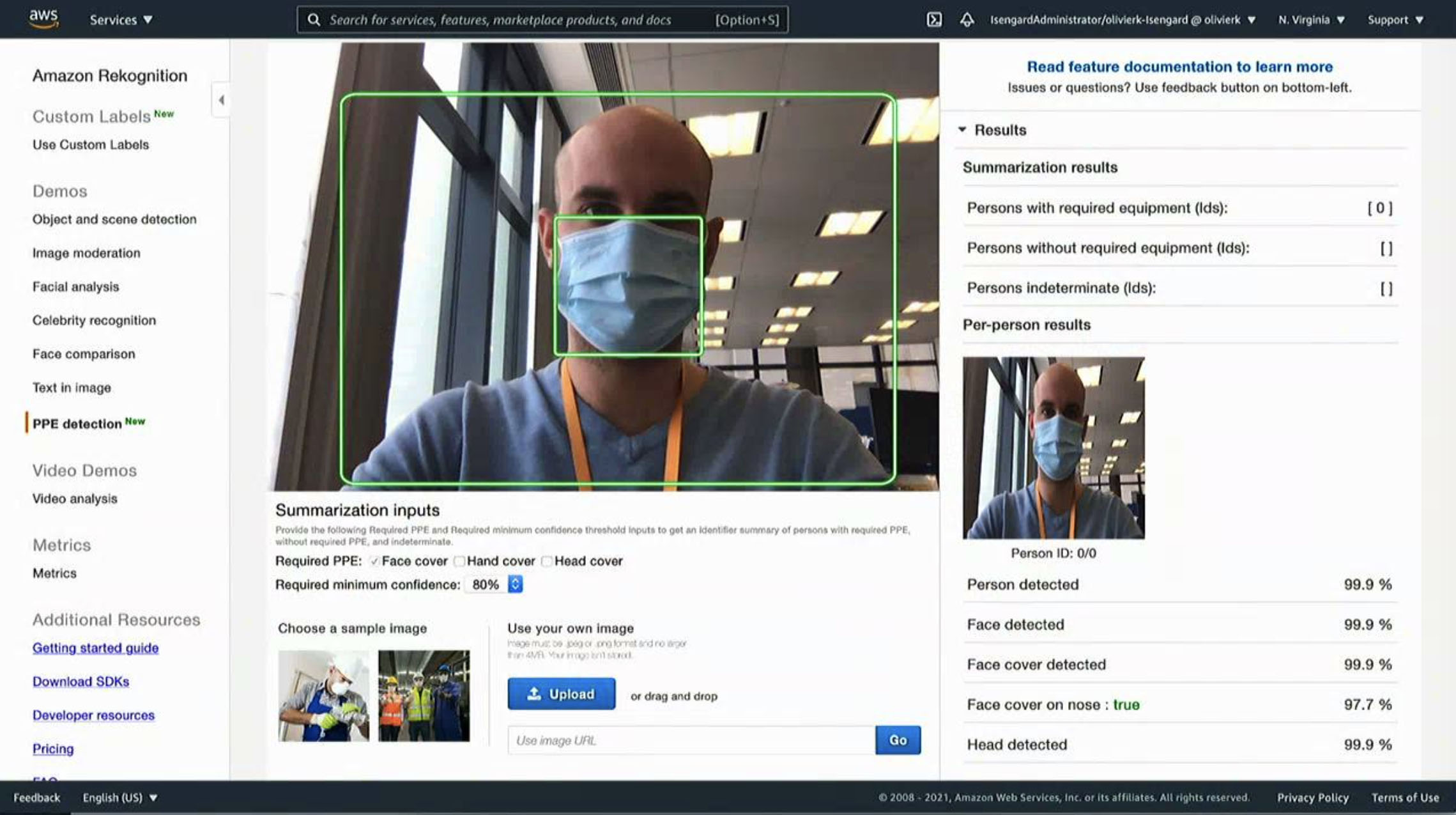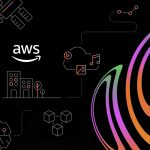Amazon Web Services (AWS), a leading cloud solutions provider, held a virtual event group discussion last February 8 together with Olivier Klein, Lead Technologist Asia-Pacific of Amazon Web Services to discuss the predictions in technology for 2021.
This year is going to be a launchpad for all kinds of change, and access to compute and storage of the cloud is spreading out of dense data centers and reaching into rural communities, remote wilderness, and even near earth orbit. Practically speaking, the cloud is going everywhere.

1. Cloud will be everywhere
Today, cloud-based applications can help boost the performance of ships at sea, aircraft traversing the sky, and in our cars and homes. Access to the cloud’s compute and storage is also reaching farther—from rural communities and remote wildernesses to near-earth orbit. Practically speaking, the cloud is accessible nearly everywhere—and it’s not just reach that matters, it’s the speed of the connections.
This matters because tasks can now start to happen where results are needed most. For example, driverless cars become real, you can have more natural conversations with services like Alexa, and factories, homes, and office spaces become increasingly efficient and resilient. And if gaming is your thing, you’ll no longer need to worry about lag hampering your experience and your skills will be at full strength, wherever you are.
2. The internet of machine learning
In 2021, we’ll see accelerated adoption of machine learning (ML) models across industries and government. In manufacturing, ML will be embedded on production lines, able to spot production anomalies in real-time. In agriculture, ML models will help farmers intelligently manage precious resources, such as soil and water. For parts of the world where small-holder farmers are the majority—for example, across Southeast Asia and Africa—pushing ML models into new applications and collecting data closer to the edge will be revolutionary in helping increase crop yields and find the best price for their effort.

3. Pictures, video, and audio will speak more than words
In the past year—as we all entered the depths of lock down—we increasingly communicated via audio, video, and images. As a result, the amount of text we consume on our screens is being reduced as we make more use of multimedia to communicate. Companies that want to remain relevant to their customers need to be keenly aware of these changing habits—rather than expecting customers to interact with their products and services through a keyboard, mouse, or other mechanical ways. When it comes to building relationships and transacting with a brand, customers want to do what’s natural to them. Thus, companies should explore this move towards user interfaces like voice, and other forms of audio and video.
4. Technology will transform our physical worlds as much as our digital worlds
In 2020 we were introduced to social distancing. As we spaced ourselves out, we had the chance to take stock and rethink how our cities live, breathe, and flow. Many of the places we live and work have been built on decades-old assumptions (or centuries-old, depending on where you live) that don’t hold up anymore—or at the very least, don’t perform well in a pandemic.
With the help of advanced data analytics, we’ll start to figure out how to design our cities with the advantages of social distancing without the sense of being apart. Our planning will consider how we make our communities healthier and safer, rather than merely denser and more efficient. It’s the true convergence of the digital and the physical.

5. Remote learning earns its place in education
This year, we’ll prove that remote learning can work—and may be a better option for some—and can have a positive and more persistent role in education. We don’t need a global health crisis for online classes to make sense. Having remote schooling (and working) options widely available at any time means that kids can stay home when they’re sick without falling behind. Or what if there’s no school to go to at all? If there’s an internet connection, there’s the possibility for some type of education.
No question, I think we should send our kids back to classrooms. But there will be other interruptions. Remote classrooms give school systems the flexibility to respond to unforeseen events—whether pandemics, natural disasters, or man-made calamities—to continue student education.
6. Small businesses will race to the cloud, and Southeast Asia and sub-Saharan Africa will lead the way
In a massive shift, small businesses will begin to make use of advanced cloud technology to reach their customers. We’ll see an explosion of higher-level technologies and service providers that cater to these small businesses. In turn, this will help small business do everything—from spinning up a chatbot to help answer frequently asked questions, to getting a customer relationship management system in place and running within minutes. Small businesses get the benefits of sophisticated architectures and applications without having to invest the time and expense of building it themselves.
The “cloud everywhere” trend described above is enabling this shift alongside the experience that most small businesses faced this past year. In many cases, the difference between surviving—or not—was an ability to leverage technology. Only 47% of small and medium businesses in the U.S. have their own website. Expect this number to grow in 2021. As this trend expands globally, we should look to nations in Southeast Asia—like Indonesia, the Philippines, Thailand, Vietnam, and Africa, like Kenya, Nigeria, and South Africa—to lead the way.

7. Quantum computing starts to bloom
We’ve seen time and again, if you can democratize the most advanced, complex technology and make it affordable, available, and understandable to as many people as possible, great things happen. At re:Invent 2019 we announced Amazon Braket, a fully-managed quantum computing service that helps researchers and developers get started with the technology to accelerate research and discovery. And in 2020 we made it available to everyone.
There’s no question we’re at the early stages of this mind-bending approach to computing, but that’s the point of Braket. It’s especially important in this exploratory time that we let as many people as possible get their hands dirty and their brains wrapped around quantum computing. As companies and institutions begin to experiment with quantum for the first time—and as that expertise starts to move beyond the academic world—we’ll see business plans and the early seeds of products and services that center around a quantum future.
8. Going to space
For technology to help everyone around the world live a better life, we shouldn’t go out and around the world as much as we should go up and above it.
In 2019, we launched a service called AWS Ground Station. It enables the ability to control satellite communications, process data, and scale operations without having to worry about building or managing a ground station infrastructure. We’re already seeing the ability to access and process satellite data helping researchers track glacial recession, maritime agencies protect vulnerable marine reserves, and agronomists better predict food supply. Startups are looking to establish a new breed of fast, secure networks in outer space. By making access to space affordable and accessible to every developer, I’m looking forward to seeing the innovations that come back down to earth and help us grow and prosper.

![]()








